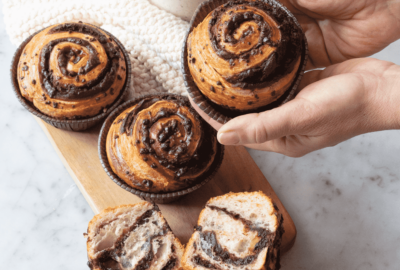Many of us are familiar with curry from Thailand or India, but there are thousands of other curry dishes, both regional and country specific that are unique, flavoursome and worth a try. Our national affection for curry is unwavering and its rise in popularity is driving an expansion of world flavours, feeding an unsatiable demand for authentic food experiences. Spicy or mild, creamy or tangy, curry serves caterers throughout the hospitality, education and care sectors well thanks to its ease of preparation and ability to feed large or small groups of diners.
What makes a good curry?
Origin Story
Understanding the origins of the dish you are creating will help you select the right ingredients and accompaniments for your curry. Authenticity is critical, you don’t need to cook in fancy equipment, but doing some research to learn more about the recipe will be worthwhile. “Curry is not just a dish – it has gone beyond this. Many recipes from different cuisines and communities all have their own curry (be that North / South Indian, Malaysian etc). Every kilometre, the spices change – the language, the soil, the approach to cooking changes – and so does curry.” Says Sameer Taneja, Executive Chef, Benares.
Back to Basics
Getting the basics right is the key to releasing the complex flavours in a curry; spices, onion, garlic, ginger form a general base (although not always used together), from which the body of the curry is developed. Whether softened for a lighter curry or caramelized for a darker, richer flavour, how you start your base will dictate the final result. Each curry has its own unique flavour depending on which sweet or savory spices are used – and more importantly – how. For example, turmeric brings a bright colour and deep earthy flavours whereas cinnamon and clove add a touch of sweetness and pep.
Harvir Deol, Regional Account Manager for Tilda Foodservice says: “The very first thing you should do when it comes to building your flavours for a curry is to heat whole spices in hot oil to unleash their flavour. Choose from cardamom, cinnamon, cloves and seeds for the perfect base to your dish. Fresh spices are the best choice for adding extra flavour to your curry. Purchase spices in small quantities and store them in a cool dry place to maintain their freshness and avoid unwanted moisture from heat sources.”
Once you have your base, start adding meat, fish or vegetables for texture and flavour. This is where curry really comes into its own for the hospitality sector. Serving a diverse range of diners with a multitude of dietary needs can be time consuming and complex. A good curry base can serve both meat and meat-free customers by ensuring the base is vegan to begin with.
Perfect Pairings
Finally, pair your curry with the perfect accompaniment. From rice to a pillowy naan, thepla, dhal or roti, there are plenty of options to explore. “The most popular and perfect accompaniment is rice” says Harvir, “a very versatile carb, which not only serves as a side, but as a partner to the curry. The rice can have some of the curry’s flavours, such as turmeric, added while cooking in water, and absorb these – making the rice nice and fluffy and yellow to accompany the perfect curry.” Complete the experience with fruity chutneys and tangy sauces that compliment the flavours of your dish, giving your diners the ability to customise it to suit their tastebuds.



